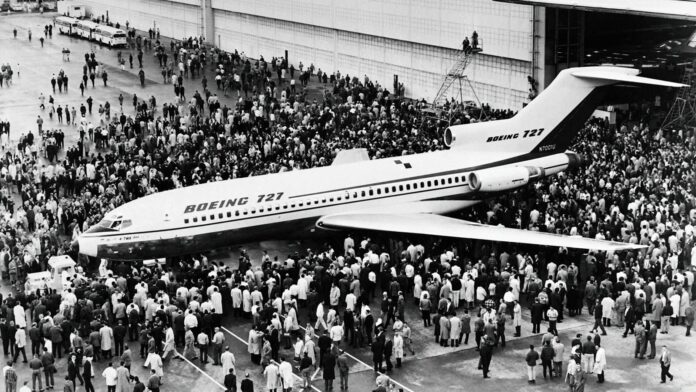In the realm where steel birds take flight and dreams touch the heavens, the human touch is both a driving force and a variable of uncertainty. In the intricate dance of aviation safety, the human factor looms large, influencing every facet of flight operations. The story of aviation is a testament to human ingenuity and achievement, but it’s also a reminder of the vulnerabilities that human errors can introduce. Join us as we delve into the nuanced world of human error in aviation and explore the measures taken to mitigate its impact on flight safety.
The Complex Web of Human Performance
The cockpit is a domain where skill, knowledge, and decision-making converge. Yet, it’s also a place where human limitations and biases can lead to unintended consequences. Human error in aviation is not a matter of carelessness; rather, it’s a reflection of the complexity of human performance and the challenges that aviators face in the dynamic and high-stakes environment of flight.
Cognitive Biases: The Mind’s Deceptive Influences
Cognitive biases are inherent mental shortcuts that influence decision-making and perception. These biases, while adaptive in everyday situations, can lead to errors in aviation. Confirmation bias, for instance, can cause pilots to focus on information that confirms their existing beliefs while ignoring contradictory data. Such biases can impact the assessment of risks and the interpretation of critical information.
Situational Awareness: A Precarious Balancing Act
Situational awareness – the understanding of one’s surroundings and the ability to predict future developments – is a cornerstone of safe flight. However, maintaining optimal situational awareness is challenging, especially when pilots are bombarded with a multitude of inputs, communications, and tasks. High workload and information overload can diminish a pilot’s ability to accurately perceive the environment.
Fatigue and Human Performance
Fatigue, often induced by irregular schedules, long-haul flights, and demanding operational environments, can impair human performance. Fatigue diminishes cognitive function, slows reaction times, and erodes decision-making abilities. The aviation industry recognizes the dangers of fatigue and has implemented regulations and practices to ensure that crew members receive adequate rest between flights.
Communication: The Key to Collaboration
Effective communication is essential in the cockpit, where coordination between flight crew members and air traffic control is critical. Miscommunication or misunderstanding can have dire consequences. The aviation industry employs standardized phraseology and communication protocols to minimize ambiguity and enhance clarity.
Crew Resource Management (CRM): A Team Approach
Crew Resource Management (CRM) is a training concept that emphasizes effective teamwork, communication, and decision-making among flight crew members. CRM recognizes that human error can stem from breakdowns in communication and collaboration. By fostering an environment where crew members can openly express concerns and suggestions, CRM reduces the likelihood of errors caused by miscommunication or hesitancy to voice concerns.
Training and Simulators: Building Expertise and Resilience
Pilot training is a continuous process designed to hone skills and prepare aviators to handle a range of scenarios, including those involving human error. Flight simulators provide a safe and controlled environment for pilots to practice emergency procedures, navigate challenging weather conditions, and make split-second decisions. By exposing pilots to various scenarios, training helps develop the skills needed to manage unexpected events effectively.
Automation: A Double-Edged Sword
Modern aviation relies heavily on automation to enhance safety and efficiency. However, automation can also introduce complexities and challenges related to human-automation interaction. Automation complacency, where pilots rely excessively on automated systems, can lead to degraded manual flying skills. In some cases, automation-related errors have occurred due to misunderstandings or misinterpretations of system functions.
Human Factors Analysis and Reporting
Aviation organizations employ a proactive approach to understanding human errors and their underlying causes. Human Factors Analysis and Reporting (HFAR) involves collecting data on incidents and accidents, investigating human performance issues, and implementing corrective measures to address identified vulnerabilities. HFAR is an essential tool for enhancing aviation safety by learning from mistakes and improving systems and processes.
Mitigating Human Error: The Path Forward
The aviation industry recognizes that human error is an inevitable element of complex operations. Efforts to mitigate its impact focus on creating a culture of safety, continuous training, and technological advancements.
Just Culture and Reporting Culture
A just culture encourages open reporting of errors and near-misses without fear of punitive action. This approach acknowledges that humans are fallible and that mistakes can be valuable sources of learning. By fostering a reporting culture, airlines and organizations can identify trends, analyze root causes, and implement corrective actions to prevent future errors.
Technological Advancements and Automation
Technological advancements are transforming aviation safety by introducing automation systems that assist pilots and mitigate the impact of human errors. Enhanced Ground Proximity Warning Systems (EGPWS) and Traffic Collision Avoidance Systems (TCAS) are examples of technology that provide critical information and alerts to prevent accidents.
Conclusion: The Ever-Evolving Journey
As aircraft crisscross the skies, they carry the aspirations of countless individuals and the weight of the aviation industry’s commitment to safety. The human element in aviation safety is a reminder that while humans may introduce errors, they are also the force behind innovation, training, and vigilance. Through a combination of training, technology, communication, and a culture that embraces the lessons of errors, the aviation industry continues to push the boundaries of safety, ensuring that each flight is a testament to human dedication and resilience in the face of challenges.
























